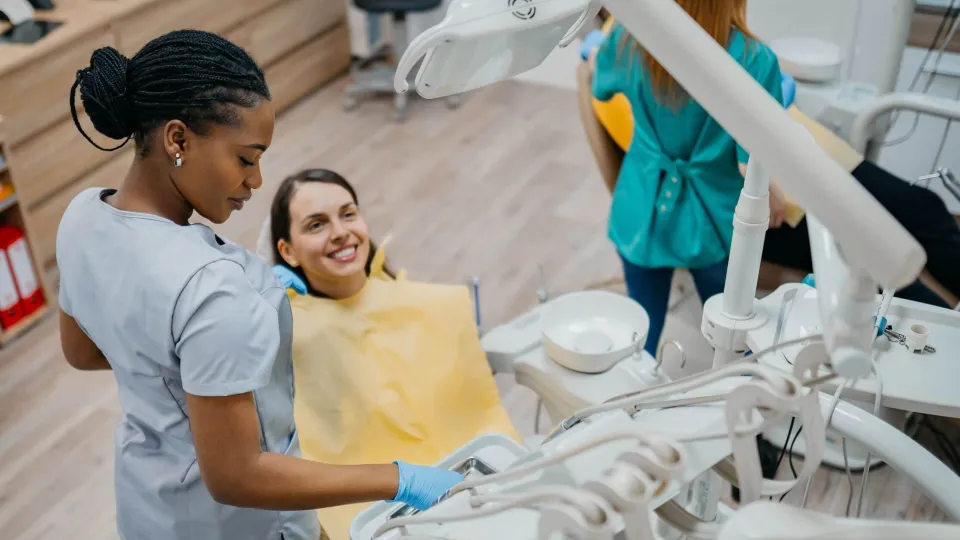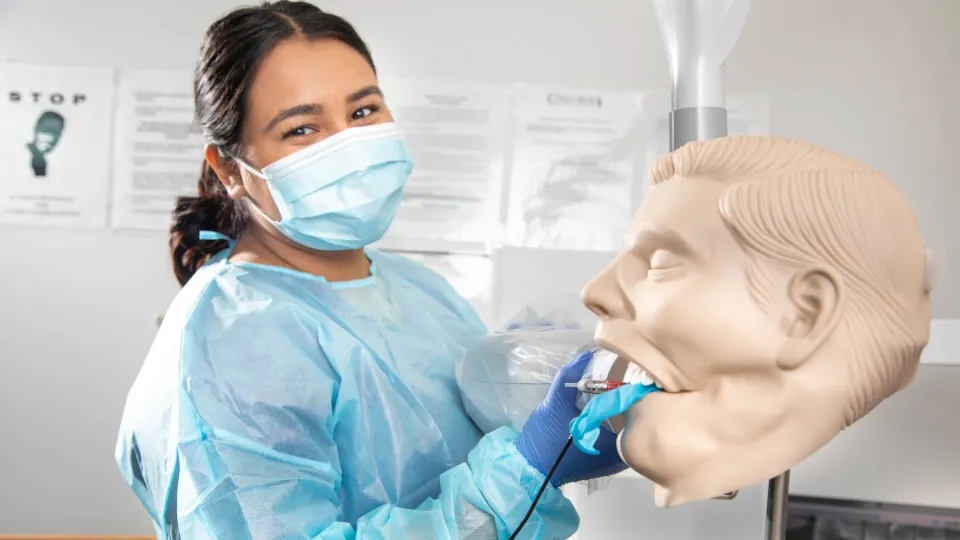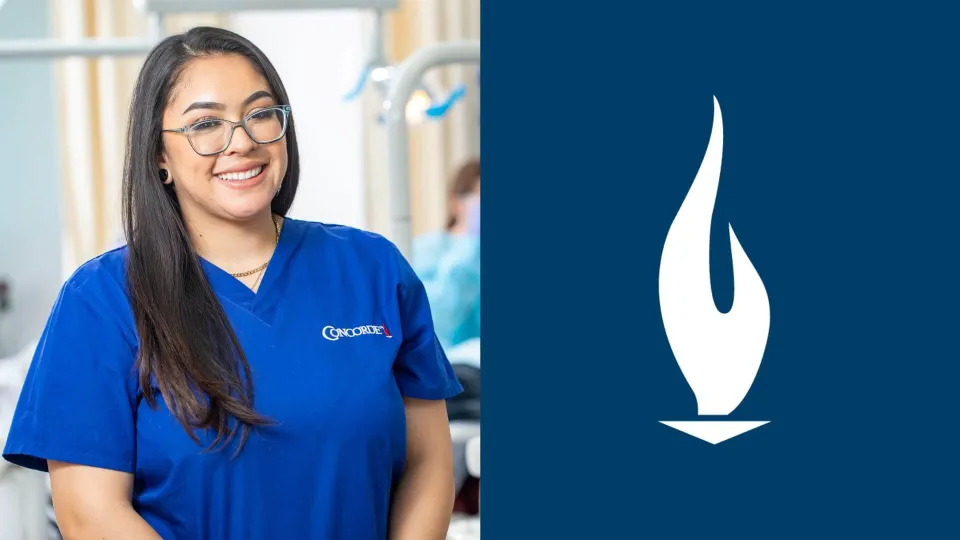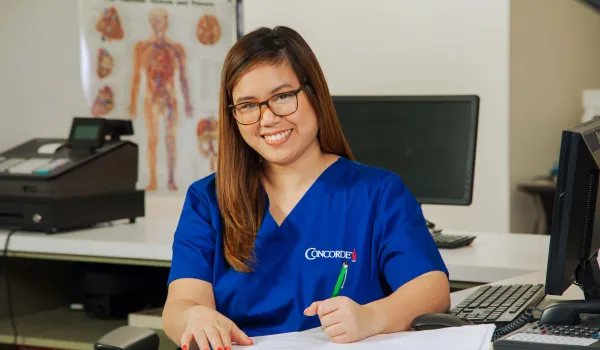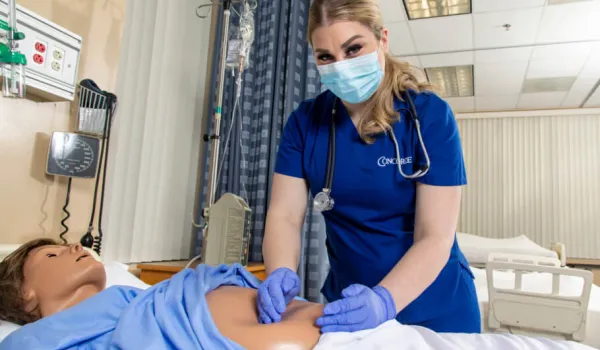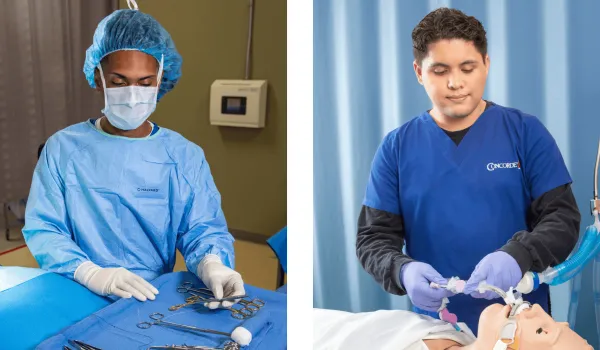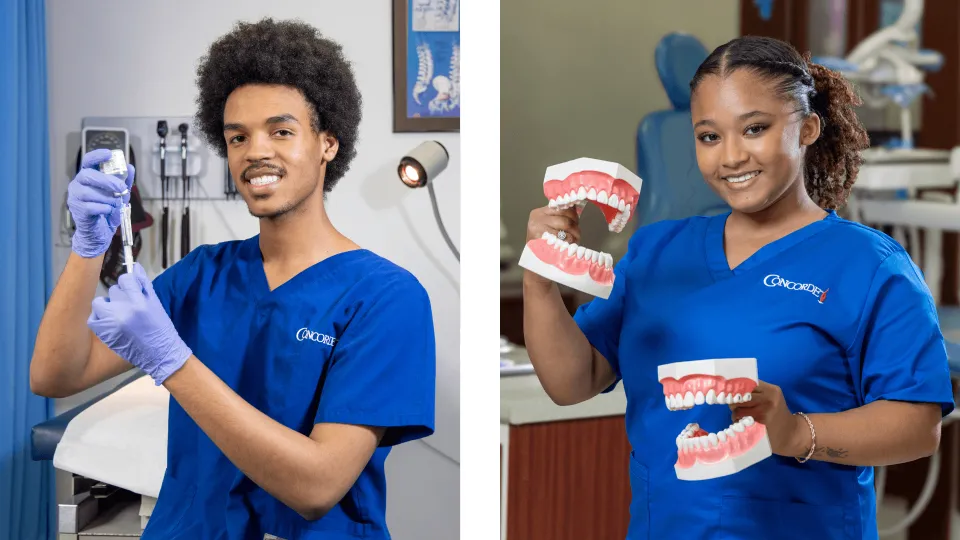
Though their job titles are similar, there are significant differences between the roles of medical assistants and dental assistants. Medical assistants are found in hospitals and physicians' offices and provide a variety of health care tests and treatments. Dental assistants work almost exclusively in dental offices providing basic dental care. Learn more about both health care options to determine which is the right fit for you.
Key Differences in Job Duties
Medical assistants perform clinical and clerical tasks in a health care environment while dental assistants focus solely on providing dental care. Medical assistants have a much broader scope of work, making this a great career path for anyone who likes to multitask or tackle unique challenges daily. Dental assisting is more focused, making it a better choice for individuals who like predictability, stability, and routine.
Medical Assistant Responsibilities

Medical assistants are a key point of contact in a medical provider's office, communicating with patients, physicians, receptionists, specialists, and insurance companies. Their responsibilities cover both clinical and administrative tasks, such as:
- Recording patients' medical histories
- Taking vital signs
- Assisting with examinations, invasive procedures, and noninvasive procedures
- Administering medications
- Taking blood and specimen samples
- Educating patients and families
- Scheduling patient appointments
- Preparing exam rooms
- Maintaining office and exam room supplies
Related: Essential Medical Assistant Skills for a Successful Health Care Career
Dental Assistant Responsibilities
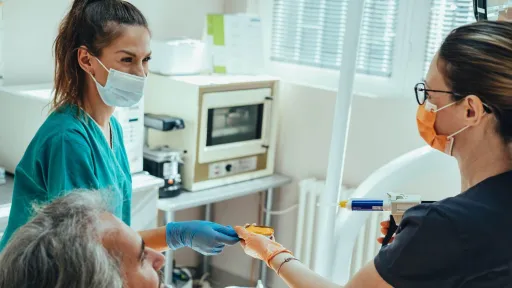
Dental assistants focus on assisting dentists and handling procedures specific to dentistry. They communicate with patients and dentists, but they don't manage administrative or front-office tasks. Their responsibilities include:
- Preparing patients for dental treatments
- Assisting with dental procedures
- Handing dental instruments to the dentist
- Preparing and managing dental equipment
- Managing suction and patient positioning during procedures
- Taking X-rays
- Applying fluoride treatments and sealants
Related: Dental Assistant: Duties, Responsibilities, and Career Outlook
Responsibilities of Both Medical and Dental Assistants
Dental assistants and medical assistants share some responsibilities. In either of these professions, your daily tasks will include:
- Creating a welcoming atmosphere for patients
- Easing anxiety about health care appointments and procedures
- Explaining procedures and treatment plans
- Providing emotional support and empathy in stressful situations
Education and Training Requirements
Both medical and dental assistants can gain the necessary education through a diploma or associate degree program. In some states, on-the-job training is acceptable for these careers. On-the-job training opportunities are more common for dental assistants. In both careers, postsecondary training is preferred.
Concorde Career College offers diploma programs for both medical assistants and dental assistants that you can complete in as little as nine months. If you'd prefer a program with general education requirements, you can pursue an Associate of Applied Science degree. This takes as few as eight months to a medical assistant or dental assistant program.
Certification for Medical Assistants
Medical assistants can gain certification through three different accrediting bodies. The American Association of Medical Assistants offers the Certified Medical Assistant credential. You're eligible to sit for the CMA test if you've graduated from a medical assistant program at an accredited institution. To maintain this credential, you need to complete 60 continuing education units every 60 months.
Alternatively, American Medical Technologists offers the Registered Medical Assistant credential. For this exam, you must be a graduate of a medical assistant program at an accredited institution with at least 720 hours of instruction and a minimum of 160 hours of externship. Relevant work experience or competency and work-based learning can stand in for these requirements. To maintain registration, you must pay an annual fee and complete at least 30 CCP points every three years.
The CMA and RMA certifications are functionally similar. A third option is the Certified Clinical Medical Assistant credential from the National Healthcareer Association. This certification is geared more toward MAs who focus on clinical duties over administrative responsibilities. To sit for the exam, you must complete a medical assistant training program at an accredited institution or demonstrate over a year of supervised work experience as an MA. To maintain certification, you must complete 10 continuing education credits every two years.
Related: RMA vs. CMA: Comparing Medical Assistant Certifications
Certification for Dental Assistants

Dental assistants can earn their Certified Dental Assistant credential from the Dental Assisting National Board. You must graduate from a dental assistant program at an accredited institution or demonstrate at least 3,500 hours of approved work experience with a DANB-accepted provider. To maintain your certification, you must pay an annual fee and complete 12 continuing education credits a year.
Another option is the Registered Dental Assistant credential from American Medical Technologists. You must complete a dental assistant program at an accredited institution that meets the organization's requirements or have at least three years of full-time work experience as a dental assistant. To maintain certification, you must pay an annual fee and complete a minimum of 30 CCP points every three years.
Related: Step-by-Step Guide: The Path to Becoming a Registered Dental Assistant (RDA)
Work Environments
Medical assistants have more diverse workplace options than dental assistants. Physicians' offices employ 57% of medical assistants. Another 17% work in hospitals, 10% work in outpatient care centers, and 7% work in the offices of other health care practitioners. Depending on their work environment, some medical assistants may work weekends, evenings, or holidays. This is especially true in a setting such as a hospital, which is open all the time.
Medical assistants work closely with everyone on their team including the front office staff, physicians, and other health care professionals. They often serve as an essential hub of communications. They might experience a wide range of medical conditions and health care needs.
Nine out of 10 dental assistants work in dentists' offices. A small number may work in the government or in physicians' offices. Dental assistants typically work during the day on weekdays. However, some may work evenings, weekends, or holidays, especially if they assist with emergency dental care. Dental assistants work with dentists and dental hygienists throughout the workday.
Related: A Day in the Life of a Dental Assistant
Career Outlook and Growth Potential
While job growth is projected for both medical and dental assistants, the opportunities are more robust for medical assistants. These professionals also have more diverse opportunities for advancement.
Job Growth
From 2024 to 2034, job opportunities for medical assistants are projected to increase by 12% compared to the average of 3% for all occupations in the U.S. This is driven in large part by the aging baby boomer generation and the increase in chronic diseases.
Between 2020 and 2050, the number of people in the U.S. aged 50 and older will increase by over 61%. The number of individuals with at least one chronic disease is expected to increase by 99.5% over the same period. Chronic health conditions are the top reason for physician visits, accounting for 41% of appointments.
Career growth for dental assistants is projected at 6% between 2024 and 2034. Though the number of people going to the dentist has increased slightly since hitting a low point during the pandemic, many people still avoid routine dental care. Cost is a major factor, as many Americans lack dental insurance. Fear of the dentist is also a common concern.
Career Advancement
Dental assistants enjoy a flexible career with multifaceted options for growth and advancement. Dental assistants can become office managers or dental sales representatives. With additional education and training that meet specific requirements, dental assistants can also take on more extensive responsibilities and potentially train to become dental hygienists. The Dental Hygiene Associate Degree program at Concorde may be completed in as few as 17 months. The transferability of credits is at the discretion of the receiving institution. Concorde does not guarantee that credits earned will transfer.
Medical assistants can further their careers by pursuing a specialization. As an MA, you might focus on pediatrics, cardiology, or obstetrics and gynecology.
Skills and Qualities for Success
Dental and medical assistants need a well-rounded set of hard and soft skills. In addition to understanding the specifics of the procedures that they perform, these professionals must have:
- Written and verbal communication skills
- Attention to detail
- Organizational skills
- Record-keeping skills
- Excellent prioritization capabilities
- Interpersonal skills
- Adaptability to work in a fast-paced environment
Choosing Between Medical Assisting and Dental Assisting
Both medical and dental assisting offer rewarding opportunities to work in health care with hands-on patient interaction. When choosing the career that's best for you, it's important to consider factors such as your personal interests, environmental preferences, and long-term career goals.
If you're intrigued by the dental field, dental assisting is a great introduction that may ignite a passion leading you to seek additional training and education. If you're interested in medical care, working as a medical assistant will give you the opportunity to help diagnose and treat a variety of conditions. In either role, you must be comfortable with the scope of the job, which may include giving injections and taking blood for a medical assistant and suctioning saliva or observing tooth drilling for a dental assistant.
In either job, you're an essential point of contact for patients, so it's important to have empathy for their experience and a passion for promoting their wellness and health.
Valuable Health Care Support Roles
Both medical assistants and dental assistants serve essential health care support roles. Deciding which path is best for you is largely a matter of personal preference. Explore these careers further to find your ideal career path. You can begin pursuing the required education for either career with our Medical Assistant or Dental Assistant programs at Concorde.
Medical Assistants : Occupational Outlook Handbook: : U.S. Bureau of Labor Statistics. (n.d.). Www.bls.gov. https://www.bls.gov/ooh/healthcare/medical-assistants.htm#tab-3
Dental Assistants : Occupational Outlook Handbook: : U.S. Bureau of Labor Statistics. (n.d.). Www.bls.gov. https://www.bls.gov/ooh/healthcare/dental-assistants.htm#tab-3
Medical Assistants : Occupational Outlook Handbook: : U.S. Bureau of Labor Statistics. (2019, September 4). Bls.gov. https://www.bls.gov/ooh/healthcare/medical-assistants.htm#tab-6
Ansah, J. P., & Chiu, C.-T. (2023). Projecting the Chronic Disease Burden among the Adult Population in the United States Using a multi-state Population Model. Frontiers in Public Health, 10. National Library of Medicine. https://doi.org/10.3389/fpubh.2022.1082183
Research and Markets. (2024, July 16). U.S. Physician Office Analysis Report 2024-2029: Demographic Shifts And Chronic Disease Trends Drive Physician Office Growth. GlobeNewswire News Room; Research and Markets. https://www.globenewswire.com/news-release/2024/07/16/2913544/28124/en/U-S-Physician-Office-Analysis-Report-2024-2029-Demographic-Shifts-And-Chronic-Disease-Trends-Drive-Physician-Office-Growth.html
Dental Assistants : Occupational Outlook Handbook: : U.S. Bureau of Labor Statistics. (n.d.). Www.bls.gov. https://www.bls.gov/ooh/healthcare/dental-assistants.htm#tab-6
Take The Next Step Towards a Brighter Future
Interested in learning more about our Dental Assistant program?
We have a Concorde representative ready to talk about what matters most to you. Get answers about start dates, curriculum, financial aid, scholarships and more!

